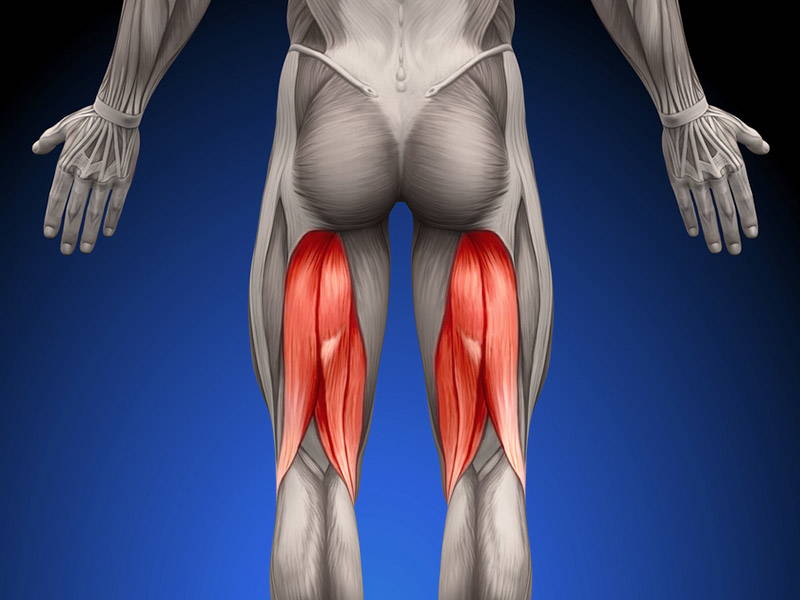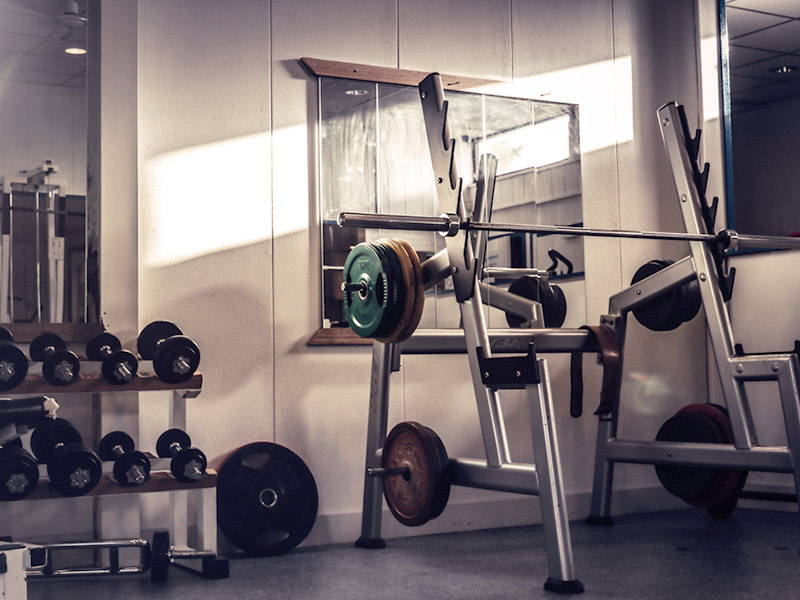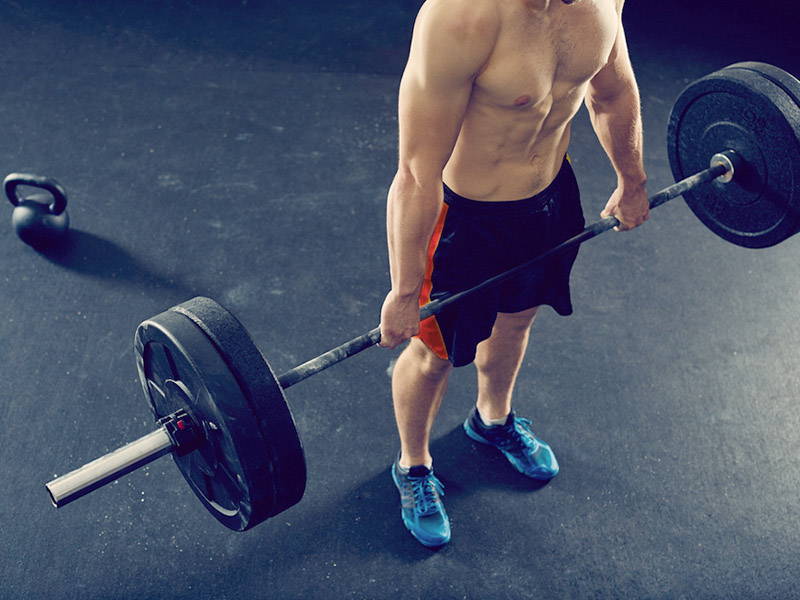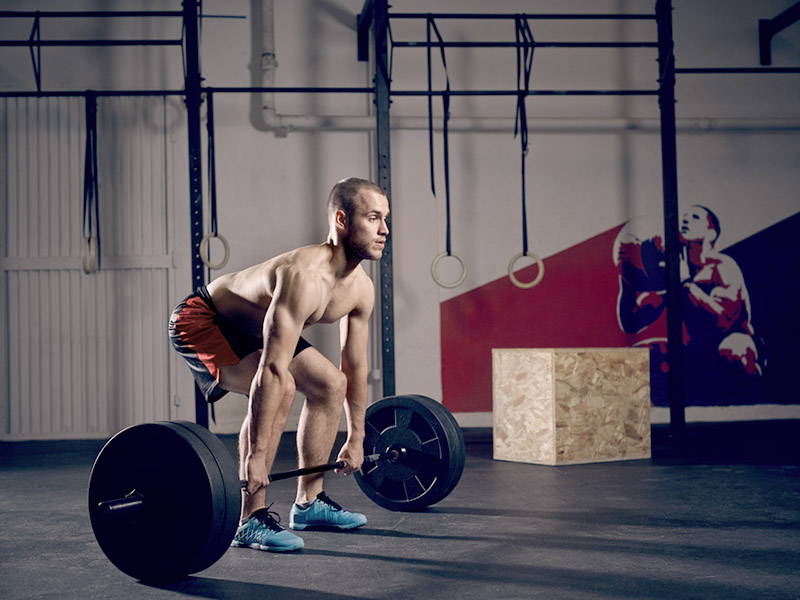
Rack Pulls vs. Deadlifts: What’s the Difference?
Key Takeaways
- Rack pulls and deadlifts are similar exercises with a key difference; the deadlift provides a full range of motion while the rack pull offers only a partial range of motion.
- Rack pulls can help improve weaknesses when performing deadlifts. If you have a sticking point picking up the bar from the ground, can’t get the lockout or need more grip strength, rack pulls might help.
- Deadlifts are great for building overall strength and power. They also work the muscles from the mid-back down. To focus on the upper back and traps, rack pulls will work better than deadlifts.
- Beginners, the elderly, and people with certain injuries may benefit from starting with rack pulls. For the majority of people, perfecting your form with deadlifts first works best before trying rack pulls.
The deadlift has long been considered one of the best exercises that you can do with free weights. Some may argue that it’s the absolute best strength exercise you can do.
However, others may find themselves frustrated when they’ve hit a wall that they can’t seem to get past. Has this ever happened to you?
Have you ever found yourself trying to get to the next weight level in an exercise but were unable to?
Or maybe your form is suffering and you just can’t stick the landing?
If you’ve had this happen, you’re not the only one. One thing that can help is the use of accessory exercises like the rack pull. This exercise can be a great standalone workout for some and help others reach their next fitness level.

Today, we’re going to look at certain goals you may have, to see which would be better – rack pulls or deadlifts. If you’re one of those who could use a boost to get to the other side, your answer may lie in this article.
First, we’ll talk about the different muscles used during each exercise. Then, we’ll discuss what the differences are between the two exercises. After that, we’ll go over the goals you may have and which would help the most:
- Heavier lifts
- Improving lockout
- Better grip strength
- Building back thickness
- Gaining overall strength
- Which is best for beginners
Muscles Worked
Let’s look at the muscles used when performing each exercise. Starting with the deadlift, here are the muscles used:
- Core
- Glutes
- Hamstrings
- Lower back
- Calves
- Traps
- Hips
- Thighs (stabilizers)
- Fingers (builds grip strength)

Now, let’s look at rack pulls to see what muscles are worked during this exercise:
- Glutes
- Hamstrings
- Quads
- Lower back
- Traps
- Hips
- Upper back
- Fingers
Almost the same muscle groups, but rack pulls emphasize the upper back while the deadlift also works the core. Rack pulls also don’t put little to no focus on the lower legs like a conventional deadlift due to its position.
Rack pulls have been called other names as well:
- Partial deadlifts
- Block pulls
- Rack deadlifts
If rack pulls are just partial deadlifts, as the name may suggest, what’s the real difference? Let’s find out.
What’s the Difference?
When it comes to comparing rack pulls vs deadlifts, you’ll find that they are very similar. In fact, a rack pull uses the same form as the conventional deadlift. The real difference lies in the range of motion when performing the rack pull compared to the deadlift.
If you haven’t read our article “How to Deadlift,” you should. It’s packed full of information, including:
- The benefits of the deadlift
- How to perform the deadlift properly
- Different types of deadlifts, including modifications
- Do’s and Don’ts to deadlifting
- Supplements to take to improve your muscle gains
Now, what’s the difference between rack pulls and deadlifts? When performing a deadlift, you lift the barbell from the floor and then back in a complete range of motion.

However, when performing a rack pull, the barbell sits on a rack below your knees. The bar is elevated on either a squat rack safety bar or blocks. The height creates a reduced range of motion which offers some benefits that we’ll discuss in later sections.
Rack pulls are performed at three different heights:
- Above the knee
- At knee level
- Below the knee
You may find that one height is more comfortable for you than others. This could be due to your height or limb length. Below the knee will offer you the greatest range of motion over the other two positions.
Above the knee is usually considered a partial rack pull or as others may call it, a partial rack deadlift. Out of the three, above the knee rack pulls offer the greatest leg activation in the quads.
Now, we’ll discuss some goals you may have to see which would work better to help you achieve those goals.
For Heavier Lifts
If you’re looking to improve your lift numbers, rack pulls will get you there. This is due to the higher elevation of the bar to start and finish the exercise.
Not only can you lift more weight doing rack pulls vs deadlifts, but you can also do more reps to fatigue. Some have asked this question: do rack pulls help your deadlifts? Yes, you’ll actually be able to lift more weight when performing deadlifts after practicing rack pulls.

This method worked well for one Reddit user whose account identifies them as a Strongman. The original poster asked about rack pulls vs deadlift on Reddit and the commenter replied, “I have actually built up to a 650lb deadlift at 200kbs bodyweight using primarily partial ROM pulls. I only deadlift off the floor once every 2 months.”
If you’ve reached a deadlift plateau and can’t seem to break out of it, replace them with rack pulls. Use rack pulls consistently for at least four weeks and then incorporate deadlifts again.
Start at your ending weight and see if you can add more. Chances are, you’ll be able to bust through that frustrating plateau and increase your rep max.
Maybe you’re lifting heavy enough but you struggle in another area? Could one of these exercises help you improve?
Improve your Lockout
One thing people may struggle with is their lockout at the top of the deadlift. Chances are, you’re golden in your form until you get above your knee with the bar, then you fall short. You may think practice makes perfect, but could rack pulls help you there?

Absolutely. If you can’t stick the lockout in your deadlift, it’s time to incorporate rack pulls. Get that bar loaded and work on your reps, focusing on your lockout at the top of the exercise.
To really focus and perfect your lockout, use the below the knee rack pull. Replace deadlifts with this exercise for at least a few weeks until you’ve got the lockout perfected. Then, you’ll be ready to reintroduce deadlifts to your routine.
Are you one of those lifters who has had issues with your lockout? If so, did you find that rack pulls were able to help you “stick the landing” and complete your deadlift? We’d love to hear if this worked for you (or if you’re working on it) in the comments.
Now that you’ve got a solution for your lockout, is there another area you may struggle with? Maybe your grip strength could be better. Let’s see which exercise would work better to meet this goal.
Better Grip Strength
One reason someone may plateau when performing deadlifts is lack of grip strength. If you struggle here, then rack pulls may be the answer.
Lifting heavier during rack pulls vs deadlifts will help improve your grip strength. The increased load will tax the hands and forearms to a higher degree in a rack pull vs deadlift. This is called “overloading the movement” and has other benefits to muscle building discussed later.
Better grip strength using rack pulls will help improve your deadlifts. There are also studies available that suggest the more grip strength you have, the healthier you’ll be as you age.
So, not only can improving your grip strength help your deadlift (and other exercises), it can also improve your health. Not a bad reason to include rack pulls if you think your grip strength could be stronger.

There are other reasons that it’s important to have a strong grip. Think about all the things you do each day that requires you to grasp something:
- Holding shopping bags and other items
- Doing chores around the home and at work
- Cooking (chopping ingredients, stirring food, etc.)
- Shaking hands with others
- Typing on the computer or your phone
- Eating and drinking
- Opening stubborn jars (have you ever had to open a jar for someone who just couldn’t get it? How did that make you feel?)
These are just a few of the things that can be affected by a lack of grip strength. Building strength in your hands, forearms, and wrists will help in almost all aspects of life.
What if you wish you had enviable back thickness like some of the greatest Golden Era bodybuilders?
Build Back Thickness
If one of your goals is to improve your back strength and/or thickness, which do you think will help more? Well, that depends on what part of your back you’re looking to focus on.
Rack pulls will help to improve the thickness in your traps and upper back. The reduced range of motion and higher elevation during a rack pull puts less emphasis on the lower body. To target the upper back and traps the most, above the knee rack pulls work best.

Deadlifts will focus more on your lower and mid-back. The full range of motion picking up the weighted barbell from the ground targets more of the lower body.
If you’re looking for overall back definition and muscle gains, you may need to use both exercises. But if you want to focus on just one area, then keep one in the rotation more to build up that thickness.
Those who have lower back issues may want to focus on rack pulls and avoid deadlifts to prevent further injury. For best results, use at or below the knee rack pulls.
But what if you’re focus is on overall strength and body symmetry?
Overall Strength
When it comes to building your overall strength, rack pulls pale in comparison to deadlifts. If this is your goal, then you’d get more benefit from deadlifts vs rack pulls.
As we discussed in the previous section, rack pulls are best for upper body strength. The deadlift is a powerful exercise that exerts the entire body when performed correctly.
Greater muscle hypertrophy happens the longer your muscles are under tension and the more stress to your nervous system. Overtime, deadlifts will create power greater than almost any other exercise.
When it comes to competition powerlifters and weightlifters, you’ll almost always see them prioritize deadlifts over rack pulls. After all, it’s one of the Big Three exercises used in competitions, along with the squat and bench press.

Golden Era legend Franco Columbu showed mind-blowing power for his size in part to performing deadlifts. We often remember him for lifting a car on his own to get it out of a tight parking spot in the 70s.
If you have to choose between rack pulls and deadlifts to develop overall strength, deadlifts win, hands down.
We’ve discussed some of the most common goals for lifters, but what if you’re just starting out? Beginners have to start somewhere with strength training, should it be rack pulls or deadlifts?
Beginners
If you’re a beginner just starting out, do you think you should start with the deadlift or rack pulls? Some would say to start with rack pulls while others believe that deadlifts should come first.

Certified Personal Trainer and owner of Repke Fitness, Louben Repke believes that in most instances, deadlifts should come first. Learning to do the motion of a deadlift first is preferred for a few reasons:
- The deadlift uses more stabilizers and goes through the entire range of motion
- They are more functional with a natural movement
- With proper form, deadlifts will prepare you to do perfect rack pulls
However, there are times where the rack pull may be worth trying first. If you’ve:
- Had a lower back injury
- Are older and just starting this type of strength exercise
- Had a sticking point with picking up the bar from the floor
If any of these are the case, you may want to work with a trainer to perfect your form. In fact, if you’ve never performed a deadlift or rack pull before, you must work with someone to perfect your form. The amount of weight being lifted for this type of exercise can cause major injury if not done correctly.
Tips for Beginners
Beginners can start with below the knee rack pulls to get used to the pulling movement of the deadlift. As you build up confidence and increase your weight, your strength (including grip) will also improve.
To get ready to perform deadlifts, gradually reduce the height of the bar until it reaches the floor. Make sure your technique is flawless and start at a low weight when you begin deadlifts. Just like with rack pulls, increase your weight and reps slowly to reduce the risk of injury.

If you choose to start with deadlifts first, the same rules apply except you’ll start with the bar on the ground. Start out with the barbell and no weights to perfect your form and then add weights slowly to build up your strength.
Increasing weight and volume too quickly can cause injury, even in competitive powerlifters. When it comes to lifting, injuries happen, sometimes without knowing the true cause.
If you’re a beginner looking to start lifting:
- Increase weight and volume slowly over time
- Train with someone who is experienced
- Make sure your form is perfect and flawless
- Don’t train too often to avoid injury
While starting your journey into heavy lifting can seem daunting, taking the right steps from the beginning is key. Avoiding injury by having perfect form will allow you to progress to heavier weights over time.
Soon enough, you’ll have the body you only dreamed of when your first started out.
The Bottom Line
When it comes to the battle of rack pulls vs deadlifts, there isn’t going to be a clear winner. Rack pulls are used primarily to overcome weaknesses in your deadlift. It’s not meant to be a replacement, more like an enhancement to the deadlift.
If you struggle with any of the issues outlined above, you may want to include rack pulls in your workout routine. Give it a few weeks and once you’re ready, incorporate deadlifts back in place of rack pulls. If you no longer have the deficit, then you may wish to remove rack pulls from your routine.
However, if you happen to like rack pulls, there’s no reason to stop doing them. You can include both rack pulls and deadlifts in your workout routine if you want to. One way to do this is to include rack pulls on back day and deadlifts on leg day.

To give you the sustaining boost of energy you need to crush your workouts, consider our Strength & Stamina Stack. This power pack of supplements is perfect for beginners and seasoned lifters to max out their abilities in the gym. See real muscle gains quicker without creating the dependency that other products can cause.
Depending on your goals for the exercises, you may include them both on the same day. However, you want to be careful not to overtax your body and risk injuring yourself. For most, you would choose one or the other to include in that day’s workout.
Do you have a preference for one exercise over the other? Or, do you incorporate both rack pulls and deadlifts into your lifting routine? Let us know your thoughts in the comments below.








